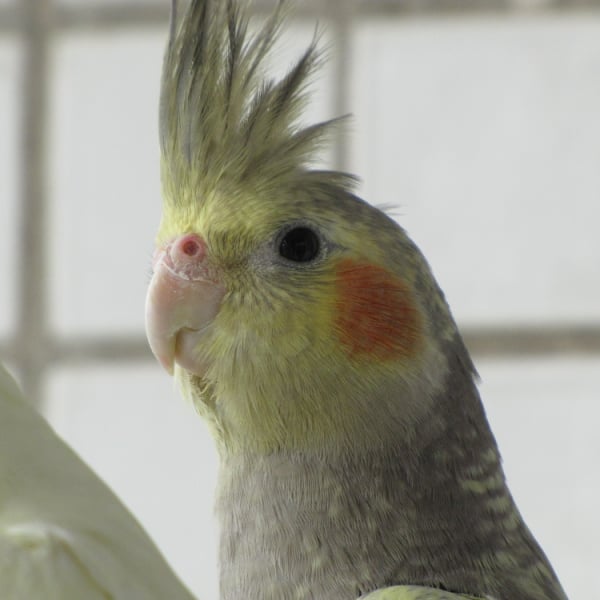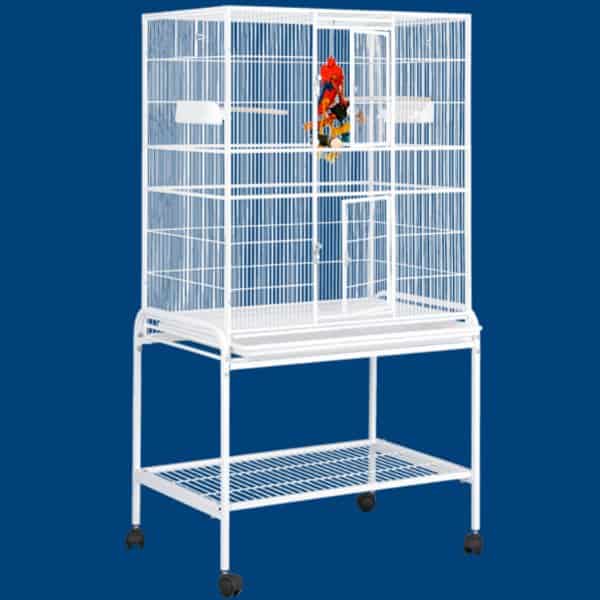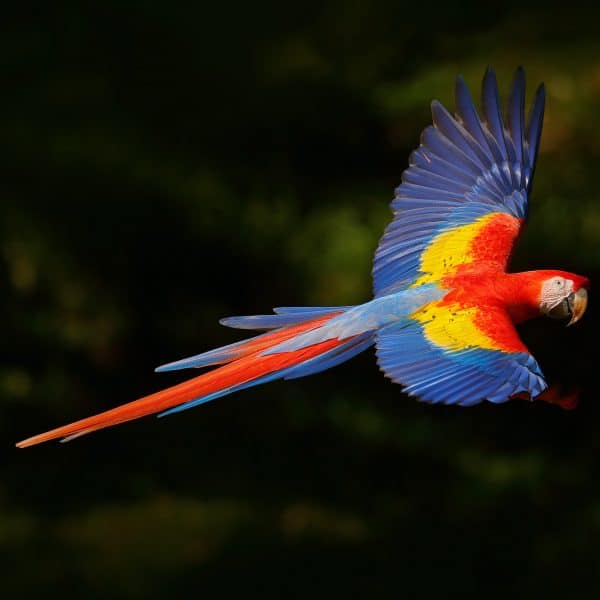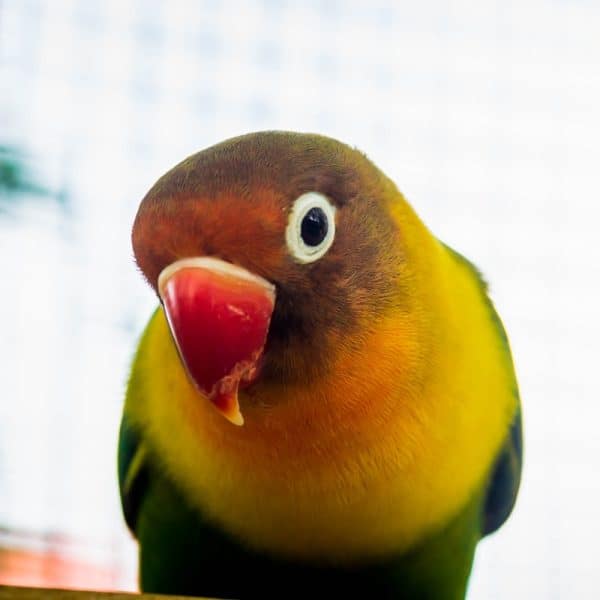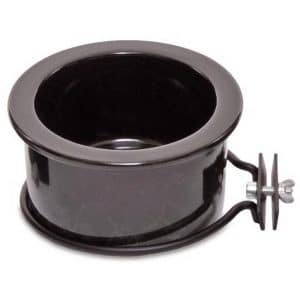Last Updated on by Mitch Rezman
There is no singular cockatiel related to the title of this post. Aside from providing expert advice to caged bird keepers I also have a passion for Search Engine Optimization as well as improving how I communicate our ideas. Apparently, I am the vortex of a digitally feathered world.
So in these stories, we’re going to talk about four unique cockatiels and their circumstances. Should anyone in our audience inherit a cockatiel with a bald spot living in an aviary with lots of foraging toys – you’re welcome.
How can I help my Cockatiel who has a bald spot on her head?(Quora)
Albino, cinnamon, fallow, lutino, pearl, and pied cockatiel mutations (to name a few) all may have an area behind the crest which has no feathers, a little bald spot that may be due to selective breeding.
There’s nothing wrong with these birds, there’s no disease the only problem would be if you were to try to show the bird the baldness would most likely eliminate the bird from competition.
The size of the bald spot can vary from tiny to the size of a quarter.
So no worries enjoy your bird.
If you are intent on showing a cockatiel with a bald spot we have heard of one possible fix for that. Let us know how it goes for your bird.
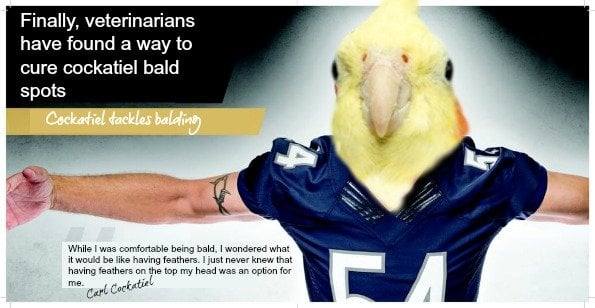
Natalie H started the conversation
I really enjoyed your discussion of foraging and toys that mimic the process. Can you suggest foraging toys that would be suitable for a cockatiel?
Natalie
Hi Natalie
One of our favorites is the Great bird foraging toy from Tinkle Turf for Dogs. Small Piece
Just watch this video
You may get some ideas from these free and do-it-yourself bird toys.
Keep in mind when birds are foraging they want to keep busy.
best
mitchr
Hello!
We are loyal patrons of WCP and look forward to the Sunday brunch every week. Perhaps this topic has already come up, but it is a question about bird species.
We have 3 parakeets (budgies) that get along well although they did not grow up together. All are rescues.
We are thinking about adding a cockatiel to the family, and are wondering about cages.
So, the parakeets have a large cage (approx 2.5′ H x 2′ W X 1′ D) and we have a smaller cage (about 1.5′ HWD) that is just lying around empty.
First question: would a cockatiel require a separate cage or could they all sleep together in the same cage?
Second: Assuming that they cannot share a cage, would you recommend the keets in the smaller cage or leave them in their current habitat?
Third: Would cockatiels and parakeets be competitive/territorial in an open space (like an aviary)?
Thank you for any advice you have on this.
Cheers,
Gemma
Catherine replies
Hi Gemma
Mixing species in an aviary needs to be done carefully. A large enough aviary is important to make this workout.
Your 24″ x 12″ cage that is 30″ high is not large enough for adding any more birds, not even another parakeet.
This cage would be a fine size cage for your parakeets to live a happy life. It also would be good for the cockatiel or even two.
Parakeets and cockatiels are not likely to fuss about each other’s presence in a really large aviary, they have similar personalities even if they are not interested in each other.
Neither is likely to pester the other species. they can coexist provided they have the space available. Neither is likely to pester the other species.
But for some combinations, even a large aviary is not enough.
For example Lovebirds are great little birds but I would hesitate to put them with cockatiels and or parakeets due to their pugnacious personalities. They would be best in an aviary on their own.
Thank you
Catherine
Gemma replies to Catherine
The cage we have is the same one you sent. I wrote 2′ W instead of 3′ W. Our parakeets are happy and have a lot of space.
Thanks for the advice. It would be great to get any more specificity on what you mean by being careful in an aviary. What do bird keepers do who have multiple species?
Thanks again,
Gemma
Catherine replies
Oh wonderful, glad to hear they have plenty of space.
Careful Bird Keepers will make sure the species they mix are able to cohabitate well.
Just like in a fish tank with more than one variety of fish.
Parakeets and cockatiels do fine with each other in the wild, both tend to stay with their own species. However, if you get alone cockatiel it may be lonely with them if they ignore him too much.
Thank you
Catherine
Hi Gemma and Russ,
I wanted to add a note to Catherine’s response. I once kept an aviary of keets and tiels. It was huge and only a few birds but I want to share something that happened.
Once I let the number of parakeet hens outnumber the males by 1. Just 1. Two female keets fought to the death over partners.
And these birds were not set up in a breeding situation at the time. I recommend you match the number of males to females carefully or that you keep only one gender of birds of each species together.
For example, if you have 4 males, they will usually get along, so would 5 females, but if you have 2 males and 3 hens, trouble is sure to begin.
Also, when I had to give up my aviary and go take care of my elderly mother, she enjoyed birds so much that I got a pair of male tiels that were rehomed due to owners moving and a pair of budgies, male and female.
They had the entire great room in which to roam and were out of the cage nearly 100% of the time.
Over time, the tenacious male budgie charged one of my tiels until the tiel developed a nervous tic in its foot. I tried AviCalm and it helped but the poor male tiel had been driven to a near nervous breakdown. I then began letting the keets out free for 5 hours in the morning. The tiels had hours out in the afternoon. The tic went away nearly immediately.
My point is, it sort of depends on personality because if you get a keet that is too aggressive, the good natured cockatiels will tolerate and tolerate until problems appear. Just introduce birds of different species cautiously.
On the other hand, I once had a parakeet move in with my beloved sun conure and they got along like best friends for the rest of the parakeet’s life and the sun conure mourned him on his passing.
Just use common sense, supervision, and a bit of caution. Hopefully, you’ll have no problems mixing species, but do watch for bullying, beginning of plucking due to nerves and stress, and be sure everyone is eating well so that no one bullies another from the food dish (another problem I once had and had to remove a bird from aviary life).
Best of luck. Thanks for your compliments and loyal business.
Nora
Hi, we inherited a cockatiel.
He or she seems to be nicer to my wife.
Please explain the clicker and if that would help me bond or be able to get her out of the cage ,we have very high ceilings and a lot of windows so scared she’ll get hurt.
Don’t want to clip wings as it sounds like that creates more problems? thanks.
Email: [email protected]
Name: Bruce
Hi Bruce
In this case, you’ll want to clip the wings at least once – Cockatiels wings grow back quickly.
Once the wings are clipped, you want to do a short clip so she can fly at least horizontally and not gain lift.
This is the time that you will begin to introduce her to “landing zones” throughout the home.
Clicker training will do wonders.
To endear yourself to the bird that is reluctant to come out of the cage, try dropping a favored treat into the food dish (from outside of the cage as possible) every time you walk by the cage with the hopes that the bird will eventually realize that every time this human walks by the cage something good will happen.
Let us know how that works
best
mitchr
Author Profile
Latest entries
 The Traveling BirdJune 26, 2025Can You Name 5 Parrot Species That Are Living Wild in the USA?
The Traveling BirdJune 26, 2025Can You Name 5 Parrot Species That Are Living Wild in the USA? Bird BehaviorJune 26, 2025How is it Parrots Are Problem Solvers Social Animals and Even Use Tools?
Bird BehaviorJune 26, 2025How is it Parrots Are Problem Solvers Social Animals and Even Use Tools? Bird & Parrot AnatomyJune 25, 2025How a Tiny Chemical Modification Makes Parrots Nature’s Living Paintings
Bird & Parrot AnatomyJune 25, 2025How a Tiny Chemical Modification Makes Parrots Nature’s Living Paintings PigeonsJune 20, 2025How Do Parrots Thrive in Cities Outside Their Native Habitats?
PigeonsJune 20, 2025How Do Parrots Thrive in Cities Outside Their Native Habitats?
